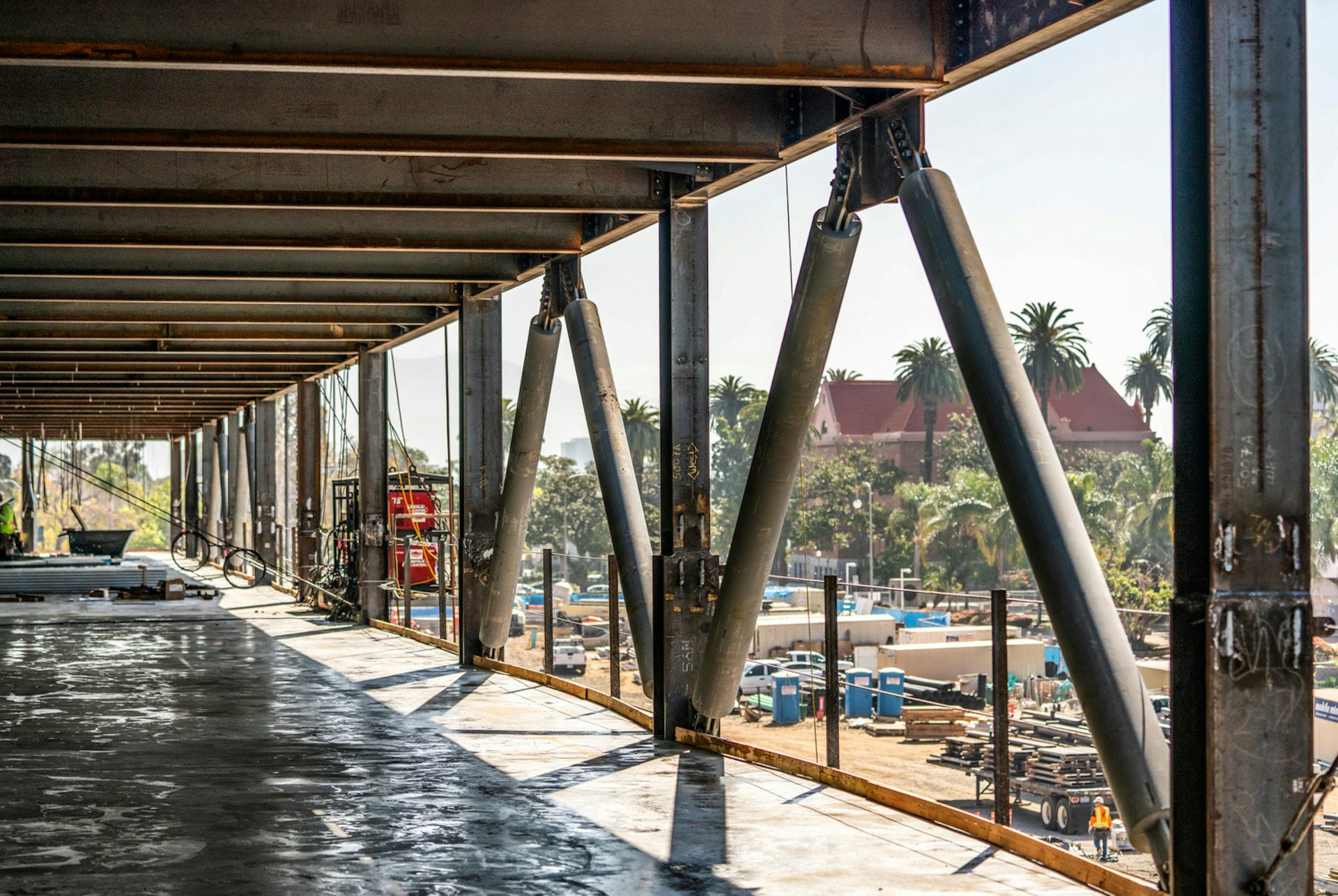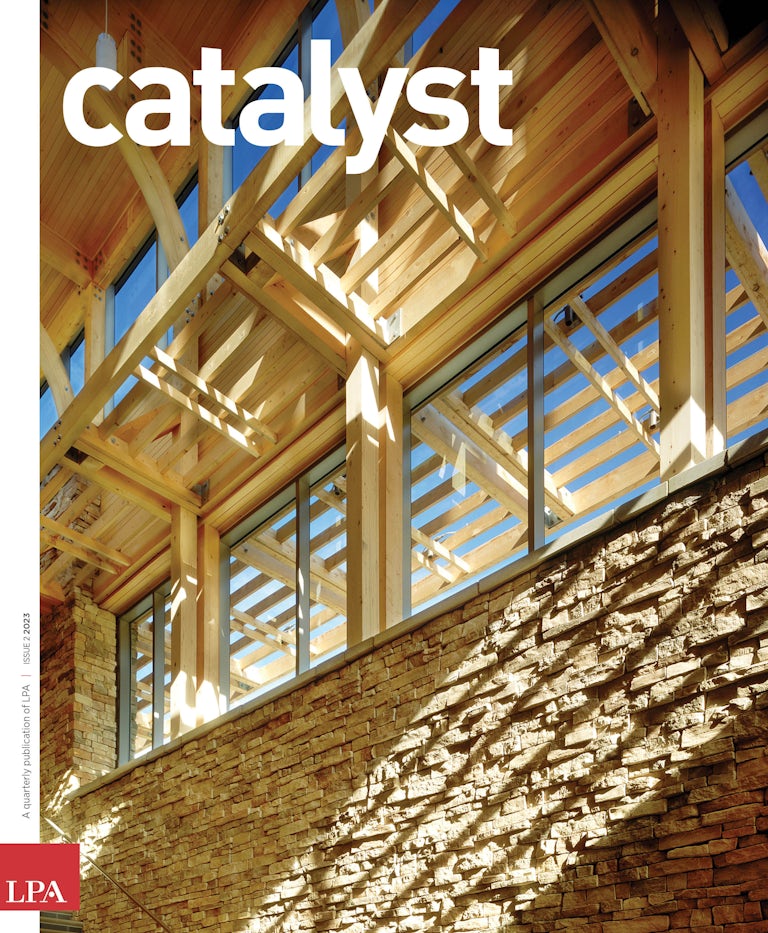The Client:
The County of Orange sought to consolidate 13 departments into a 500,000-square-foot Civic Center, creating a “one-stop shop” for public services. Central to the project was the need for resilience. In the event of an earthquake, government agencies must be able to respond immediately to the needs of citizens and bounce back quickly without exorbitant repair costs. Balancing resilience with cost-efficiency while maintaining a welcoming civic presence were at the center of one of the largest public-private partnerships in California.
The Solution:
LPA’s integrated team designed the two six-story buildings from the inside out. Rather than starting with a building shell and trying to fit in the programming, designers worked with the county to organize the functional aspects of the building in the most efficient way possible. Doing this minimized the project’s cost, allowing more of the budget to go into maximizing resilience, function, energy efficiency and aesthetic impact. Architects and engineers coordinated to optimize the mechanical and structural systems layouts while maximizing the usable space for the client. This effort reduced the costs associated with both the structural and mechanical systems while also decreasing the floor-to-floor height at each story.
Doing More with Less: Resilience and Economy in an Attractive Package

Optimizing the spacing of structural supports minimized the amount of structural steel, which lowered construction costs as well as the project’s embodied carbon footprint. Reducing the vertical height of both buildings eliminated a significant proportion of steel, glass and finish materials while also reducing the volume of conditioned space (providing further energy savings). Using the money saved from the optimization effort, LPA’s structural engineers were able to increase the strength of structural frame to meet essential facilities requirements, adding to the project’s resiliency.
To manage seismic loads, the structural system uses a series of buckling-restrained braced frames (BRBF), a structural steel frame that is highly effective in dissipating energy. The system uses sacrificial “seismic fuses,” which absorb the destructive force of an earthquake and prevent it from damaging the parts of the structural frame that support the building. Following a future extreme seismic event, the “fuses” can be replaced in a timely and cost-effective manner, allowing the building to return to service more quickly after a disaster.

The integrated design process had aesthetic benefits too. Early in the process, architects and engineers coordinated the spacing of structural members and façade elements to create a visual rhythm to the building exterior. The glazed components allow natural light into the office areas and also create the opportunity for the braced frames to become a visual component of the curtain wall system.
“When we use an integrated process, we can consider multiple factors at once, and find elegant solutions that maximize value to our clients and those they serve,” says LPA structural engineer Ben Ness. “In this case, the result is more resilient buildings and a better occupant experience for the county.”















